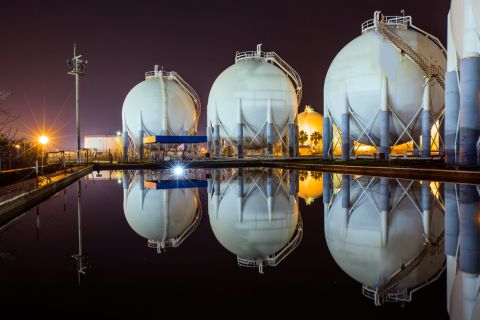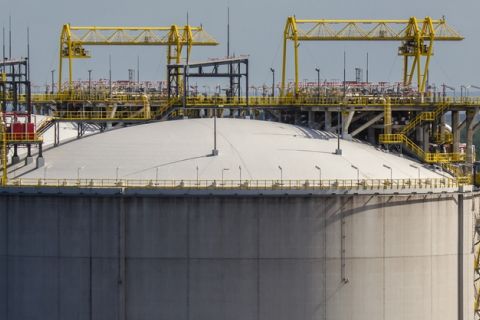IPO activity increased significantly in 2017 compared with 2016, both in the size of deals coming to market and the number of issuers going public. This change is not entirely surprising because key market indices hit record highs, the U.S. economy is in its ninth consecutive year of expansion, market volatility hovers near all-time lows and the regulatory environment is positive.
To fully understand the capital markets landscape, it’s necessary to look at the broad scope of forces at work.
The Jumpstart Our Business Startups (JOBS) Act was signed into law in 2012. One of the goals of the JOBS Act was to increase the number of companies entering the public markets and to provide a regulatory transition period. The IPO “on-ramp” provisions reduce some financial disclosure, corporate governance and other regulatory hurdles for emerging growth companies. Provisions also include the ability to submit a confidential draft registration statement to the U.S. Securities and Exchange Commission (SEC) and the option to test the waters by marketing to certain types of potential investors to gauge interest.
Since its adoption in 2012, more than 75% of companies that filed for an IPO used the JOBS Act. The SEC continues to focus on policies to advance the goal of streamlining capital formation.
Additionally, the New York Stock Exchange (NYSE) expanded its range of solutions for issuers. We recently modified listing requirements for capital raising through special purpose acquisition companies (SPACs). SPACs are companies formed to raise capital through an IPO that then use the proceeds to acquire an operating business.
In 2017, SPACs that focused on business combinations within the energy sector raised more than $3 billion. TPG Pace Energy Holdings, for instance, raised $600 million in May. When a SPAC successfully completes its acquisition, the newly formed listed company receives the same benefits as a traditional IPO. At this point, current market conditions point to an ongoing trend of energy companies going public via SPACs in 2018.
Of course, timing is key to completing deals in the energy space. Broader macro-economic and market forces have contributed to IPO momentum.
A few essential ingredients including rising asset prices, lower market volatility and steady energy prices are necessary for a successful capital raise. The benchmark Dow Jones industrial average and Standard & Poor’s 500 indices continue to hit record highs. The Volatility Index was at record lows during 2017. As participants anticipate future U.S. interest rate hikes, raising capital in the equity markets is generally more attractive than raising debt capital because borrowing will become more expensive.
Furthermore, crude oil has climbed steadily since July 2017 and revitalized the energy sector. Well-timed IPO roadshows during these positive market conditions have proven beneficial for energy companies looking to enter the public markets.
Energy companies raised more than $4 billion in IPO proceeds by early December 2017 with more than $21 billion market cap at offer. Among these were 14 domestic energy companies representing a broad range of subsectors including midstream, E&P and oilfield services. The NYSE was proud to list Hess Midstream Partners LP, Antero Midstream GP, Oasis Midstream Partners LP and BP Midstream Partners LP.
Last year was vastly different from 2016, which saw only nine energy IPOs that raised $1.8 billion in proceeds.
The IPO pipeline looks robust, with an increasing number of energy companies expected to raise capital in 2018. Anticipated global demand growth and the federal objective to fund substantial infrastructure projects, including those impacting pipelines and transportation sectors, should provide a substantial boost to the energy midstream subsector in particular next year.
Tara Dziedzic, Donna Hayes and Carrie Slagle are with the New York Stock Exchange Energy Group.
Recommended Reading
CEO: Linde Not Affected by Latest US Green Subsidies Package Updates
2024-02-07 - Linde CEO Sanjiv Lamba on Feb. 6 said recent updates to U.S. Inflation Reduction Act subsidies for clean energy projects will not affect the company's current projects in the United States.
Global Energy Watch: Corpus Christi Earns Designation as America's Top Energy Port
2024-02-06 - The Port of Corpus Christi began operations in 1926. Strategically located near major Texas oil and gas production, the port is now the U.S.’ largest energy export gateway, with the Permian Basin in particular a key beneficiary.
US Gas Producers’ Growth Tied to Export Markets
2024-01-25 - Over 70 U.S. gas producers supplying Cheniere Energy’s liquefaction facilities Gulf Coast liquefaction facilities understand the link between export markets and their success, the company’s executive vice president and chief commercial officer Anatol Feygin said.
Report: Biden to Announce Delay on New LNG Export Terminal Approvals
2024-01-25 - Sources say the White House plans to add climate change considerations to LNG export approval process.
US Companies Ponder Future in Venezuela as Washington Pressures Maduro on Elections
2024-01-26 - The pressure is on again for Venezuela’s President Nicolás Maduro to announce a clear election timeline amid tensions following recent arrest orders and detentions of his opposition supporters.




